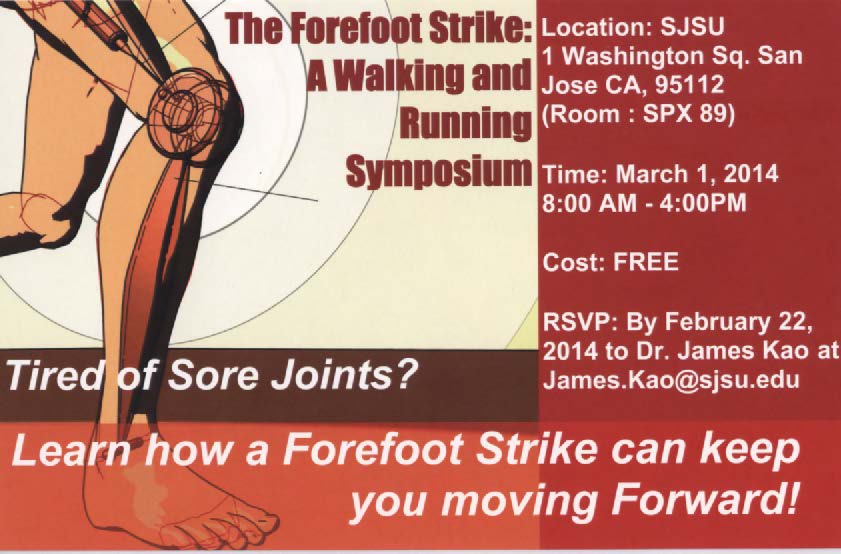On Saturday, February 7, Dr. Koa will be presenting an update to the forefoot running symposium given last year. More than 50 articles were published related to forefoot, barefoot, and minimalist shoe running in 2014. He will be presenting a selection of these the articles that are the most relevant to identifying the benefits of forefoot running, the importance of proper shoe selection, and the methods of training to become a forefoot runner. The symposium will be a little lecture, a little demonstration, and a lot of discussion. This is not a lecture. This is seeing how Biomechanical research can be used to cause real-world changes to movement activity millions of people do for physical activity and fitness.
This symposium is a fund-raising event for a non-profit organization (Silicon Valley Applied Biomechanics – SVAB). One of the program directors at SVAB is a former KIN major (Jonathan Williams). Come support his work at SVAB to fight childhood obesity. As an incentive to encourage SJSU students to attend, the symposium fee of $20 has been reduced to $5 for SJSU students. Please pre-register if you plan on attending. Registration information is on the flyer.
The symposium will be held in YUH 124 from 9:00 – 3:00 pm. We hope to see you at the Forefoot Running Symposium Spring 2015.



